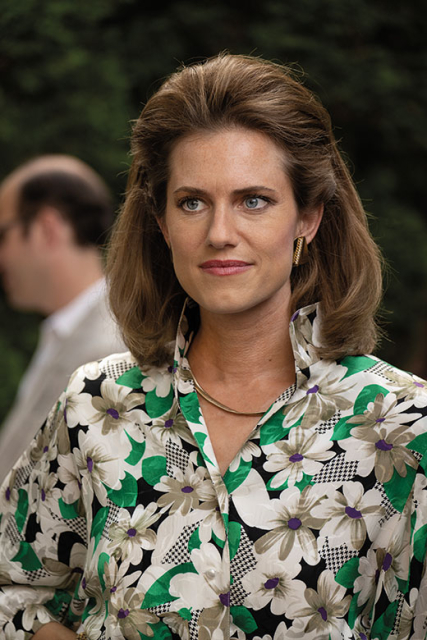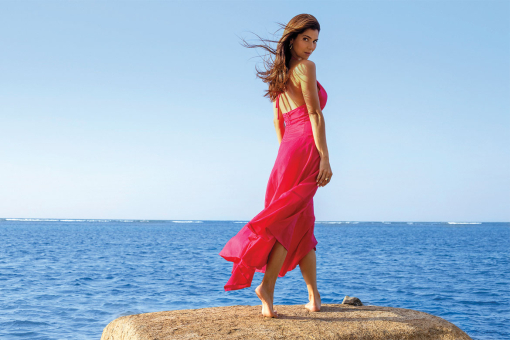In Fellow Travelers, Matt Bomer plays Hawkins "Hawk" Fuller, a debonair and closeted gay man who conducts a clandestine love affair over four decades. Based on Thomas Mallon's 2007 novel of the same name, Showtime's eight-episode limited series presents an unflinching portrayal of the LGBTQ community's recent history.
It begins with the Army-McCarthy hearings that Wisconsin Senator Joseph McCarthy and his chief counsel, Roy Cohn, marshaled in the 1950s to expose homosexuals in government (via the "Lavender Scare"), moves through the '60s and Vietnam War protests, continues into the '70s (seen as a time of unbridled sexual abandon) and ends with the AIDS crisis of the '80s, which devastated the lives of so many.
The task of credibly aging Bomer (White Collar) fell to Jordan Samuel, an Emmy Award–winning makeup designer (The Kennedys) who's been skillfully morphing faces for theater, film and TV since he was a teenager obsessed with monster movies.
"We were trying to make everything as real and authentic as possible. This was not make-believe. You want to honor every decade," says Samuel, who matured Bomer's face by plumping out his jawline with removable dental implants. He also used a technique called "stretch and stipple," which involved painting thin liquid latex onto Bomer's outer eye areas to fabricate crow's feet. He then applied makeup to create age spots and other skin damage.
For nonfictional characters, Samuel took pains to make the actors look spot on. Cohn's most prominent feature, for example, was his bulbous nose. Will Brill (The Marvelous Mrs. Maisel), who played Cohn, wore a look-alike prosthetic, as did Kris Langille, the actress who played Cohn's mother, "to capture the family resemblance," Samuel says.
All the designers were committed to such verisimilitude. "We used books, magazines, vintage newsreels, newspapers, military-issue literature and archival collections at historical societies and libraries. Anything we could get our hands on," says costume designer Joseph La Corte (Under the Banner of Heaven), who outfitted characters in period clothing that ranged from '50s military uniforms to the leather fetish-wear popular in '70s gay clubs. Because so many scenes take place in D.C.'s starchy environs, La Corte was fortunate to get his hands on a stash of fabric that Brooks Brothers sold to a retailer a few years back. The four-time Emmy nominee, who began sewing his own clothes at age ten, used it to craft many of the 686 costumes he designed for the series' principals. He recalls a compliment Bomer gave him: "I've never looked so good with so few fittings."
Hair department head Michelle Côté (The Bold Type) attended to everyone's coiffures. That included Allison Williams (Girls) as Lucy Smith, a senator's daughter who's smitten with Hawkins. A patrician sort, Lucy never appears onscreen with so much as a strand of hair askew. "She comes from a wealthy family and goes to a hairstylist," says Côté, who kept Lucy on trend with the latest looks — from a wavy '50s bob to an iconic '60s flip to poofy '80s "big hair" shellacked into place.
Jonathan Bailey (Bridgerton) plays Tim Laughlin, Fuller's enduring secret love. Côté designed four looks for him, using three wigs. A former salon hairstylist, she remembers hair fads — from the clean-cut '50s to shaggier '60s hair for Tim's Vietnam War protests. For the disco '70s, she tidied him up again, accenting his groomed wig with a mustache and sideburns. Even when his hair (again, a wig) looks thinner in final episodes, she says, "It's important that the four looks seem like the same hair." Côté made sure each wig was built with the same hair growth pattern.
As the characters' appearances were being molded and shaped, production designer Anastasia Masaro (Tully) focused on their surroundings. Responsible for bringing creator Ron Nyswaner's vision to life, she aspired to a look that was "elegant, epic, sophisticated looking and highly detailed." Each set required deep research and comprehensive drawings.
She also oversaw construction and worked closely with set decorators to furnish each built or found location in a manner that enhanced the story and provided an intimate feel. "The spaces I create for them, everything needs to be there for a reason," she says, describing how she and Nyswaner (Homeland) decided that Tim, a religious man, would have hung a handmade Palm Sunday cross in his home. "His books, his pictures, his letters," every little detail that she filled his home with, she says, "was created to tell his story."
Despite shooting in Toronto, Masaro managed to closely approximate the actual Senate and State Department hearing rooms where McCarthy grilled government employees. Perusing archival photographs, she noted the columns and arched windows and even the American eagle carved into the judge's bench behind McCarthy's seat, and used them all in her design.
Throughout, Masaro maintained close contact with the hair, makeup and costume designers. They regularly exchanged ideas to ensure that their individual plans worked together. For instance, while Masaro was decorating Tim's apartment with used furniture to reflect his modest circumstances, La Corte similarly envisioned Tim arriving in D.C. with a small suitcase containing a bare-bones wardrobe that the costume department would mix and match.
Masaro and La Corte spent hours looking at paint colors to be sure the costumes and walls wouldn't clash. Even so, it wasn't always seamless. At one shoot, La Corte recalls, the wallpaper and Lucy's print dress matched so closely, "She looked like a floating head in her bedroom." Still, he adds, "It was the best collaborative process I've experienced so far."
"We poured our hearts into this thing," Samuel says. "I was really grateful to be a part of it and able to tell the story and show people a little bit of what went on in these periods and how hard it was just to survive ... and just to be yourself. That was the really moving part of it."
New episodes of Fellow Travelers air Tuesdays on Showtime.
This article originally appeared in emmy magazine issue #11, 2023.














